Information and Downloads
- textures 2
- generator Created in 3ds Max, exported with babylon.js glTF exporter, and hand-edited in VSCode with glTF Tools
- copyright (c) 2021 Wayfair, CC BY 4.0.
- source glTF-Sample-Models
- KHR_texture_transform
- KHR_materials_sheen
- KHR_materials_specular
- KHR_materials_variants
- KHR_lights_punctual
- fileSize 3.00 MB
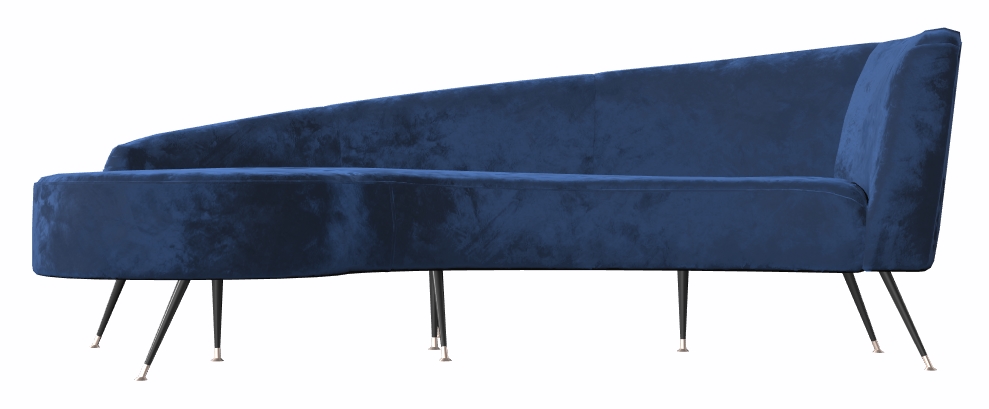 Download GLB Source Asset from
Download GLB Source Asset from
glTF-Sample-Models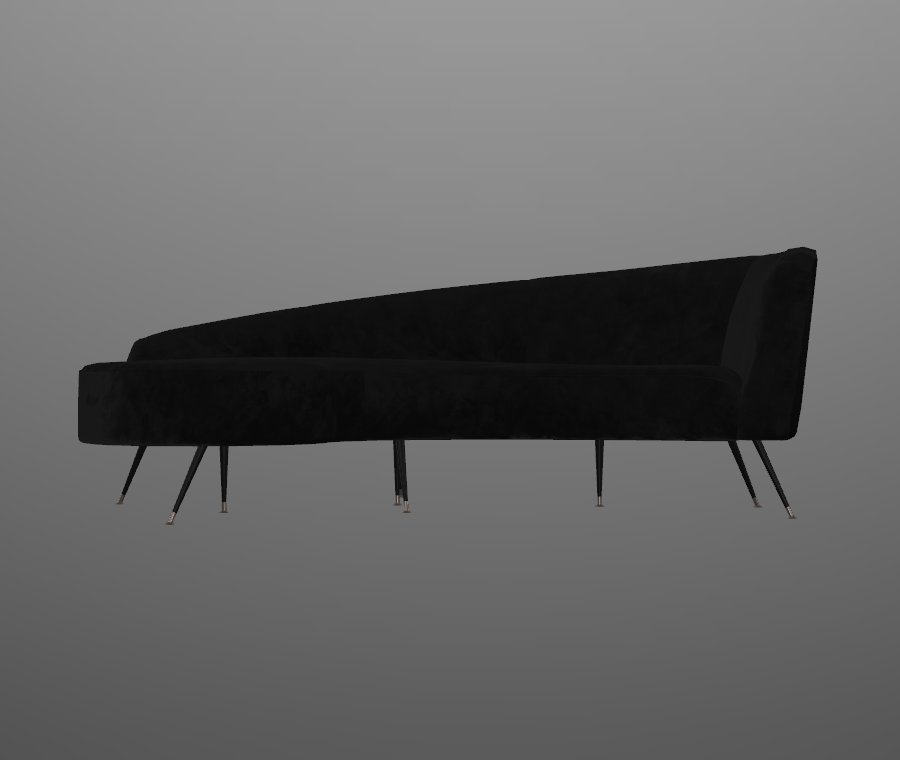 Open in USD Web Viewer Download USDZ Converted with three.js
Open in USD Web Viewer Download USDZ Converted with three.js
r154, Needle Fork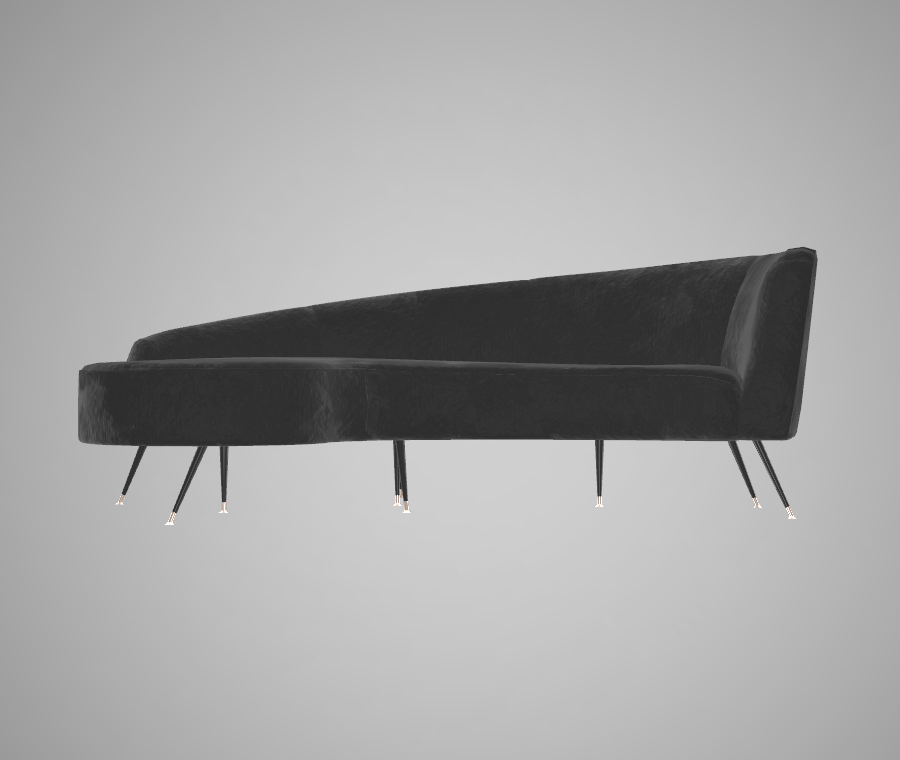 Open in USD Web Viewer Download USDZ Converted with Blender 3.6
Open in USD Web Viewer Download USDZ Converted with Blender 3.6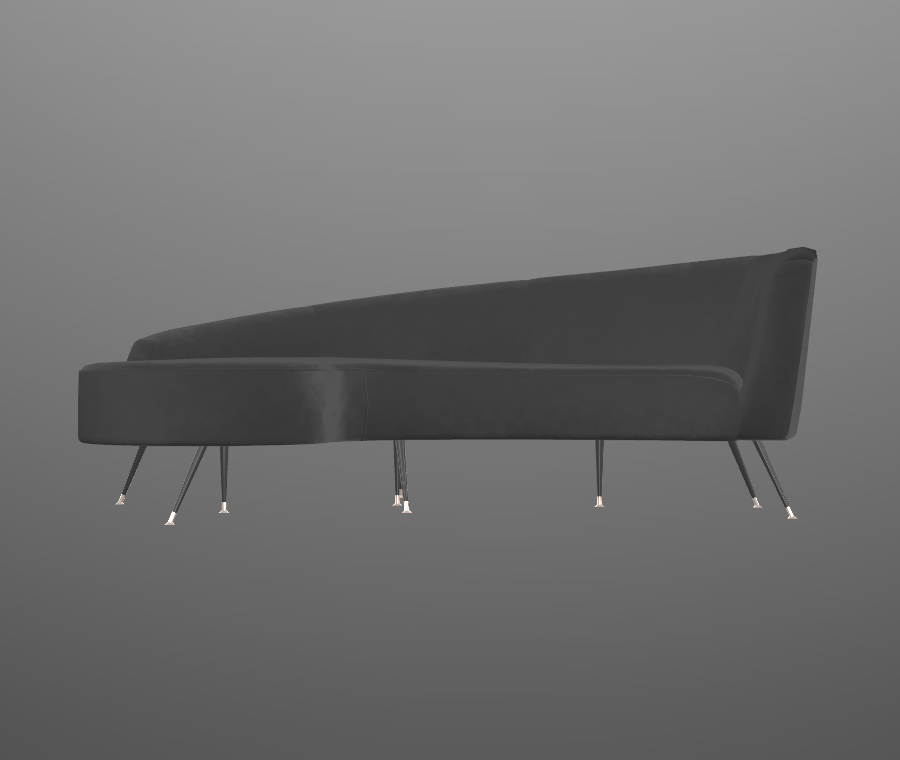 Open in USD Web Viewer Download USDZ Converted with Omniverse Kit 105.0
Open in USD Web Viewer Download USDZ Converted with Omniverse Kit 105.0
Description
GlamVelvetSofa
Screenshot

Above: screenshot from the Babylon.js Sandbox.
Description
This model represents a real product, a velvet sofa bed being sold on the Wayfair website.
The model is made of three parts, each with their own materials. Two 1024x1024 PNG textures are used for the whole model, an ambient occlusion map and a normal bump map. All UVs are arranged between 0 and 1, and KHR_texture_transform is used to repeat the normal map for the fabric. The model uses 4319 triangles and 3204 vertices.
The model uses several extensions:
- KHR_lights_punctual to provide a key light for better velvet illumination. Sheen seems to respond better to punctual lights than with image-based lighting alone.
- KHR_materials_sheen for velvet sheen.
- KHR_materials_specular to colorize facing-angle reflections, which occurs with some fabrics (satins, silks, velvets, etc.).
- KHR_materials_variants to represent the five fabric color options on this product.
- KHR_texture_transform to scale the normal bump texture separately from the ambient occlusion texture.
Reference Photos
The use of real-world photographic reference is meant to help glTF developers with calibrating material features and renderer behavior, so we can more accurately represent e-commerce products. Additional photo reference is available on the Wayfair website.
The official photos of the product have been retouched to emphasize materials and finishes, a common practice in retail photography. This can make the materials difficult to reproduce in a 3D model, as it's tricky to isolate accurate base colors, roughness, specular color, etc. Sometimes a physical sample of the surface is difficult to obtain, and prescribing controlled photography can be onerous for manufacturers.
Fortunately, we can rely on customer review photos to provide additional material reference. Although lighting can be poor, customer photos are often unretouched which can offer a less-biased view of the surface materials. The ground truth is usually somewhere in the middle, since the official photography provides higher resolution and controlled lighting, while the customer imagery provides little or no retouching.

Photo references of the product. Top row: official product photography, bottom row: customer review photography
KHR_materials_variants
The model uses the extension KHR_materials_variants to add five fabric variants. Each uses slightly different UV offsets via KHR_texture_transform to add variety.
- Black
- Champagne
- Gray
- Navy
- Pale Pink
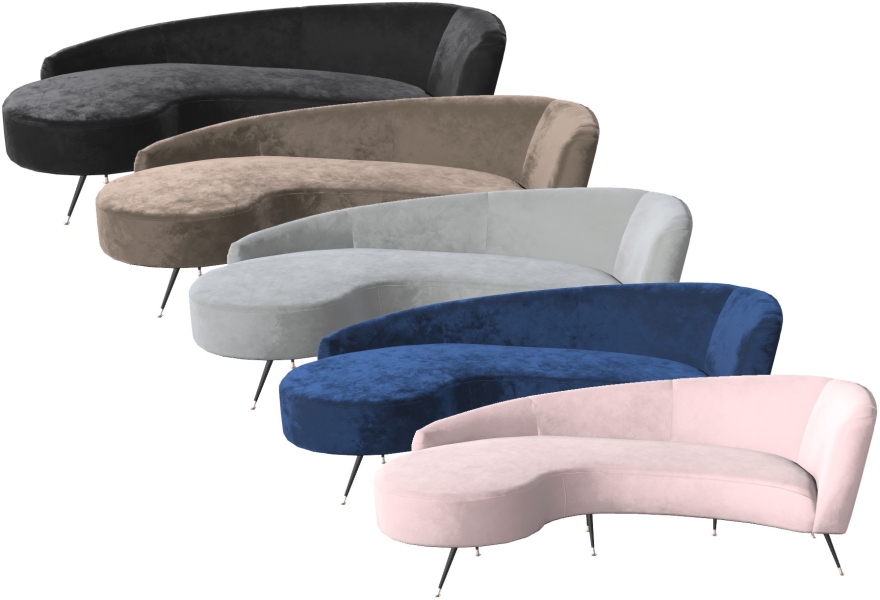
KHR_materials_sheen and KHR_materials_specular
The extension KHR_materials_sheen is used for the main fabric color; it best represents how velvet microfibers interact with lighting at glancing angles.
KHR_materials_specular is used to colorize reflections on dielectric (non-metal) surfaces. Velvet, satin, silk, and similar fabrics can colorize reflections which makes them difficult to replicate in a traditional PBR metal-rough material.
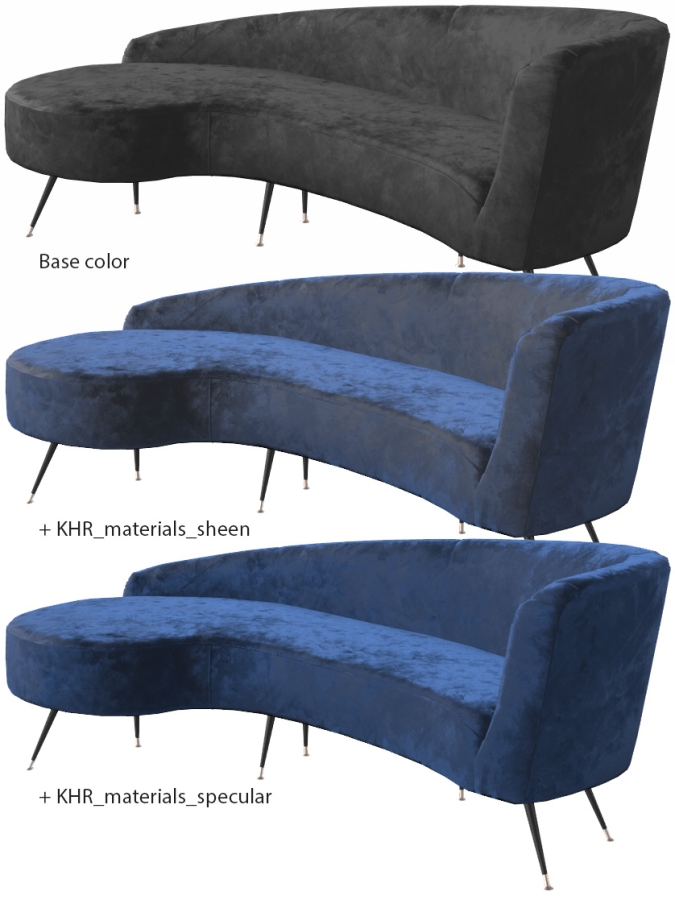
Top to bottom: base color alone, sheen color added, specular color added.
A normalTexture simulates the bending of velvet microfibers from human touches, by bending the surface normals to point at different areas of the image-based lighting. The texture is a combination of tiled "grunge" patterns. The red channel was rotated 90 degrees to create variation, the blue channel was filled with white, and a cotton-weave normal map was overlaid. Then the texture was re-normalized.
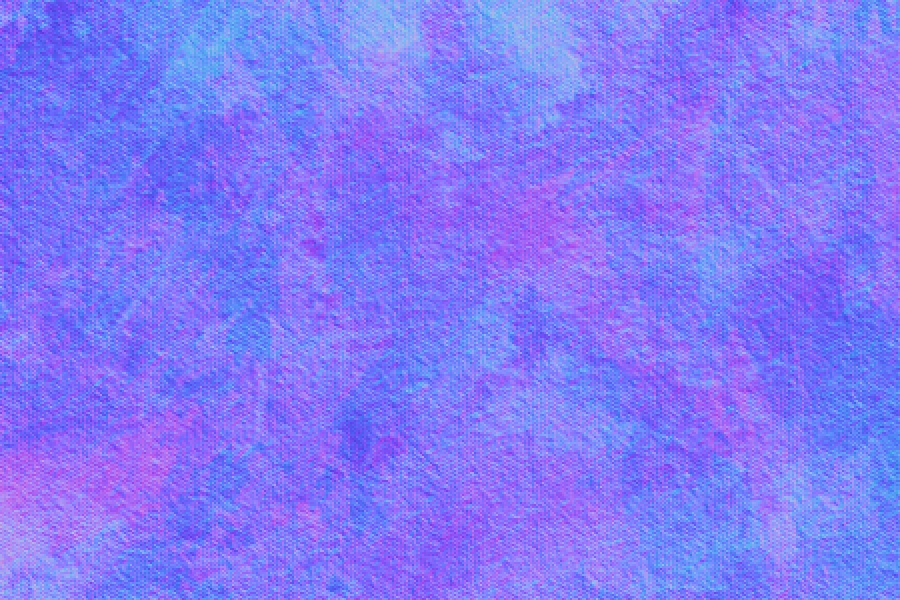
The normal map, enlarged and cropped to show detail.
KHR_lights_punctual
The extension KHR_lights_punctual is used to add a directional light to the model, with its Intensity set to 3. This provides better velvet illumination, as sheen responds better to punctual lights than to image-based lighting (IBL) alone.
This is highly dependent on the exposure range in each IBL, however most IBLs do not capture strong exposure values for the lights unless the sun or a suitably bright light source are present. In these examples, the "studio" IBL from Babylon.js was used, which uses +2.40 stops for each light.
Augmented reality IBLs typically contain a low value range, as they're often created by transforming the view from the mobile device's front camera. It is hoped the addition of a punctual light can restore the benefits of strong key light to improve the sheen response.
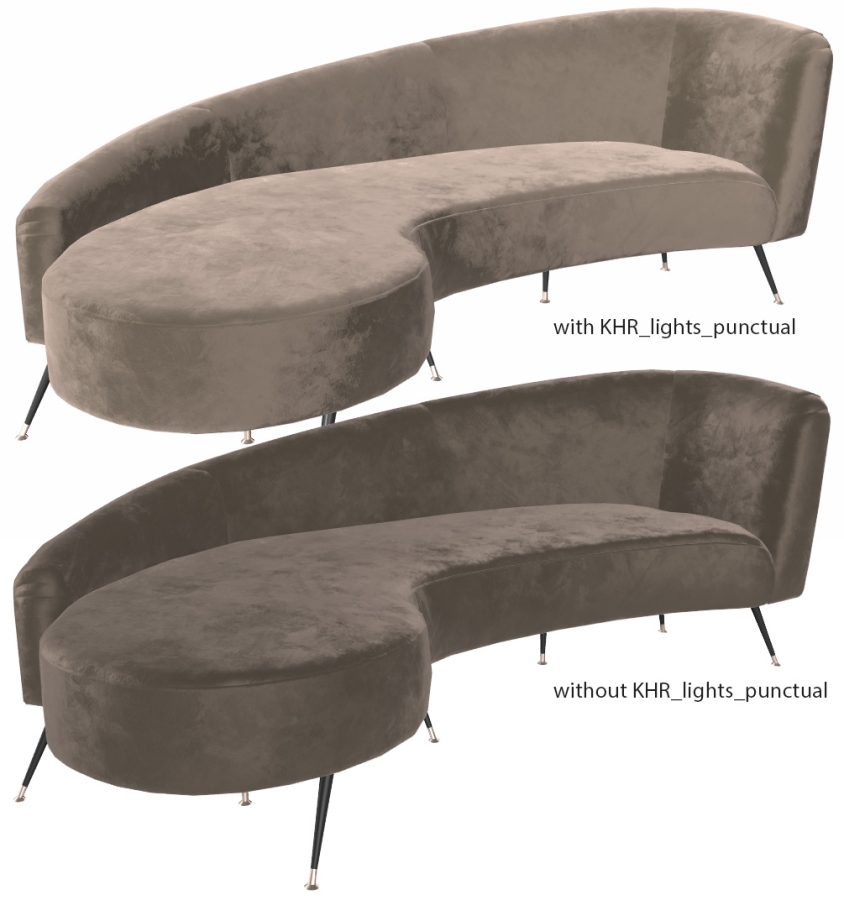
Top: Punctual light improves sheen. Bottom: Disabling the punctual light.
Authoring Details
The model was created with 3ds Max and exported to glTF via the Max2Babylon exporter. The glTF file was then edited manually in Visual Studio Code with the glTF Tools extension to add KHR extensions and fine-tune material values.
License Information
(C) 2021, Wayfair LLC. CC-BY 4.0 International https://creativecommons.org/licenses/by/4.0/.